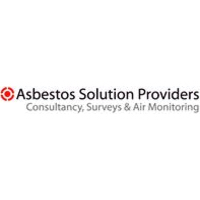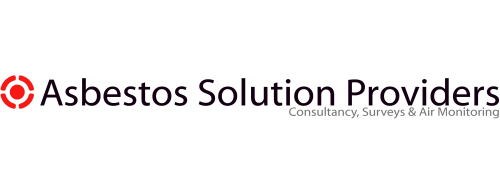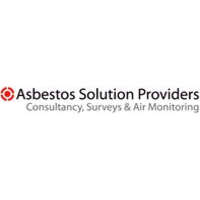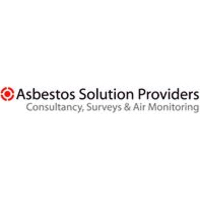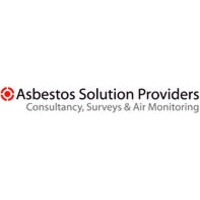Title Page
-
Document No. IA 011 - Licensed Contractor Site Audit Issued August 18
-
Client / Site
-
Audit Number
-
Auditor
-
Audit Date
LARC and Project Details
-
LARC Company Name
-
LARC Supervisor
-
Client Name
-
Site Address
-
Area of Removal Work - Full description
-
Material(s) to be Removed
Site and Project Documentation
ASB5 and Mandatory Licences
-
GUIDANCE NOTE: Check that a Valid ASB5 Notification Form, POW, Waste Carrier License, Contractor SOPs, are on site for the works to be audited
-
Contractors HSE issued License Number
-
ASB5 Notification number:
-
Waste Carriers License Number
-
F10 for CDM 2015 works number (where applicable)
-
Are the site details on the ASB5 correct?
-
Is the Audit being undertaken within the dates stated on the ASB5?
-
Does the ASB5 clearly describe the planned scope of works?
-
Is there a Suitable POW available on site?
-
Suitable and Sufficient Risk assessment available on site?
-
Is there a copy of the Asbestos Licence on site?
-
Is there a valid Certificate of insurance on site?
Works in progress
-
GUIDANCE NOTE: ‘Removal works’ includes associated activities such as injection of ACM’s prior to removal, as well as fine cleaning. It does not include pre-smoke test preparation works or the visual inspection prior to clearance air testing.
-
Are Licensed Asbestos Removal works taking place within the enclosure during the audit?<br>
Site Assessment
Enclosure
-
GUIDANCE NOTE: Ensure that the enclosure is in good condition, properly constructed, and maintained so as to prevent the spread of asbestos.The enclosure needs to have been soundly built, maintained and regularly inspected. If there are any flaws or breaches of the enclosure, make a specific note as to the extent. If any remedial works are identified, inform the supervisor immediately - don’t wait until the end of the audit to point this out. Viewing panels should be a minimum of 600 x 300mm panel size. Excessive tape should not unnecessarily restrict the viewing area. Note approximate sizes if they are less than 600 x 300mm. We don’t need to be pedantic about a few millimetres. Bubble viewing panels may appear smaller, though the actual area of the curved surface may well equate to the correct dimensions. Warning signs should include the ‘No Unauthorised Access’ and PPE/RPE signage as a minimum.
-
The integrity of the enclosure has been established and maintained and site checks undertaken?<br>
-
Viewing panel sizes meet the minimum requirement of 600mm X 300mm
-
The selection and provision of warning signs are appropriate to the works?
Works in progress
-
GUIDANCE NOTE: ‘Removal works’ includes associated activities such as injection of ACM’s prior to removal, as well as fine cleaning. It does not include pre-smoke test preparation works or the visual inspection prior to clearance air testing. If there are no removal works or associated activities taking place during the audit, then the audit does not continue, and Operations should be informed immediately.
-
Are Licensed Asbestos Removal works taking place within the enclosure during the audit?<br>
3.2 - Airlock
-
GUIDANCE NOTE: The airlock meets the requirements in terms of size, construction, cleanliness and necessary features. Where possible, DCU direct connection should always be utilised. Where space allows, airlock and baglocks should be constructed to maximise access and egress of men and materials.
-
The airlock meets the minimum size requirement of 1m x 1m x 2m and is correct warning signage displayed on the outer flap?
-
Smaller airlock dimensions are detailed and correctly justified in the Plan of Work?<br>
-
The airlock is free from visible asbestos (or general) debris?<br>
-
There is suitable provision to clean RPE / coveralls within the airlock (Type H vac, bucket and sponge minimum) and provision for containment of waste consumables?
-
All airlock openings/flaps are suitable and weighted? Is there a minimum flap displacement of 100mm?
-
An inner stage viewing panel is present and of the correct size of 600mm X 300mm?<br>
-
GUIDANCE NOTE: 1m x 1m x 2m minimum airlock size requirement should be met unless there is a justifiable reason for smaller dimensions and that the reasoning is documented in the Plan of Work. The airlock should be clean, with no sign of any visible asbestos debris whatsoever. Do not enter the airlock to do this. Push open the outer flap. Use a stick or similar to push the next flap. Use the viewing panel to the inner stage for an additional view. With a direct connection, there are often limitations as to how much can be assessed for visible debris, so make observations to the extent that the site conditions and set-up will allow. Suitable provision for RPE decontamination should be appropriately placed, to be either a bucket of water and sponge, or equivalent such as spray bottle and cloth. All airlock openings should be oval or rectangular, with all flaps weighted, and sufficient overlap that the flaps would sufficiently close the openings in the event of NPU failure. A correctly sized viewing panel should be located on the inner stage. If this cannot be achieved, the expectation is for CCTV to be in place instead.
-
GUIDANCE NOTE: Any other observation or concern, regarding the design, construction or functionality of the airlock to be noted here, including if it should have and could / should have been bigger.
-
Comments
Asbestos Removal Technique
-
GUIDANCE NOTE: Controlled asbestos removal has been observed, including the use of suitable dust suppression methods, and with waste appropriately bagged as removed. This should be removed at the end of each shift, via dedicated waste route.
-
The asbestos dust suppression method in use is suitable for the ACM being removed?<br>
-
The removal procedure observed is suitable for the ACM being removed?<br>
-
Waste is properly and promptly bagged?
-
GUIDANCE NOTE: dust suppression and removal procedure observed must be the most correct and suitable for the ACM being removed. This is based on your observation of the works. Waste should not be allowed to accumulate, but should be promptly bagged/wrapped. The stage of the works may be that no waste has been generated yet, or that final cleaning is being undertaken, in which case this part will not be applicable. Where blasting techniques are in use, ensure that operatives are suitably trained and experienced, direct feed RPE is in use and all internal services are isolated.
Plant and Equipment
-
GUIDANCE NOTE: Plant and equipment is suitable and sufficient for the work, is properly located and being correctly used.
-
There are a minimum of 2 H-type vacuum cleaners on site and operational?
-
The number and capacity of NPU’s matches the Plan of Work and that the required volume of air flow has been correctly calculated?
-
NPU’s have gauge/display and potentiometer for adjustment of air flow
-
Extracted air from each NPU is vented outside and any additional air flow required for related trunking has Been calculated correctly?<br>
DCU Assessment
-
GUIDANCE NOTE: DCU must be fully functional, maintained, operational, equipped and suitably positioned as per the POW
-
Arrangements for DCU are
-
DCU Pre Set up checks completed and recorded?
-
Valid GAS SAFE Certificate available (within the past 12 months)?
-
Valid NICEIC Electrical Safety Certificate Available from with the last 12 Months?
-
Previous air test available in the DCU?
-
CO Monitor fitted and working?
-
Is a direct connection the most suitable option?
-
DCU Lighting and heating are functioning and sufficient?
-
There is heated water to the shower(s)?
-
The DCU is suitably stocked with consumables (e.g. nail brush, towels, shower gel,)?
-
There are sufficient type 5/6 Coveralls and RPE filters available?
-
There are sufficient showerheads for the number of personnel on site? (2 shower heads= maximum 4 men)
-
Is there a suitable mirror in the clean end?
-
The DCU is as clean as is reasonably practicable?
-
Waste water is filtered and discharged either directly or via containers to foul drain?
-
DCU doors are marked (including the prohibited entry and mandatory PPE signage) where required?
-
If connected to mains electrical 240v, is a 30 milliamp RCD being used?
-
Is the earth spike available and being used?
-
Any other observation or concern regarding the decontamination unit should be noted here.
-
GUIDANCE NOTE: Direct connection should be the first consideration on any job, with a transit arrangement an acceptable second option if circumstances require it. The DCU should be fully functional, equipped, stocked and fit for purpose. All doors, with the exception of the external clean end door, should be tested to ensure they are fully self-closing, where
these doors are readily accessible to check. The external dirty end door should display the ‘No Unauthorised Access’ sign and the mandatory RPE and PPE signage. The external clean end door should display the ‘No Unauthorised Access’ sign, and the internal clean to shower door should display the mandatory RPE and PPE signage (though the RPE and PPE signage is permissible on the external clean end door). Even if the unit has signs of being well used, it should nevertheless be as clean as is reasonably practicable.
Waste Arrangements
-
GUIDANCE NOTE: storage is secure and segregated as appropriate.
-
GUIDANCE NOTE: Whether the waste is being stored in a segregated section of a company van, or in a skip, the containment should be secure/locked when not being accessed.
-
Waste Containment is secure?
-
Waste is segregated from equipment?
-
What are the waste arrangements?
Supervisors Site Checks
-
GUIDANCE NOTE: All Supervisor inspection records must be available for inspection by the auditor and must be kept up to date. A daily site diary (or similar record) must be completed. To include the below.
-
Supervisors Site diary completed for each day?
-
Daily attendance sheet and visitors log completed?
-
Daily Exposure Records Completed?
-
Enclosure checks?
-
Airlock Checks?
-
Baglock checks?
-
NPU(s)
-
Type H Vacuum cleaners
-
Daily DCU checks completed?
-
DCU pressure gauge readings for NPU
-
Blasting / Quilling equipment
-
Scaffolding / mobile towers
-
Valid PASMA card for staff erecting mobile tower scaffolds?
-
Using fixed scaffolding? is there a valid inspection certification within the previous 7 days?
-
Other - MEWPS etc
-
Any other equipment that would require inspection records to be included here.
Site Staff Documentation
-
GUIDANCE NOTE: Select a supervisor and an operative, at random. Indicate whether they are in the enclosure or not. You can include anyone on site who is involved in the site works. Permitted exemptions would include the driver who has quite obviously just arrived on site to deliver a piece of equipment, or the Contracts Manager who is attending site in his role as a Contracts Manager. Current medical certificates must be present. If they really have just had a medical and are awaiting the certificate, then ASP would expect a note from the Contractor Operations to be present in the site file to cover this. The supervisor and each operative on site should be able to produce either a certificate of competence issued by the Royal Society for the Promotion of Health (RSPH), which is no more than 12 months old or a current training record (new or refresher, valid for 1 year) or evidence of competence derived through Training Needs Analysis by their employer. For the RSPH certificate, level 2 refers to Operatives, and level 3 to Supervisors. Face fit tests should match up to the RPE in actual use. It is not uncommon to find operatives using one type of RPE and having a face fit test certificate for another type. Note that there is no official expiry date for a face fit test. Employees should be clean shaven. If they are in the enclosure, it is not necessary for the auditor to try to observe and confirm this.
Medical, training/competency and face fit certification for 2 selected employees is valid, relevant, in date, and authenticated where necessary by the contractor. -
Operative Name
-
Current Annual Training Certificate-Give provider and certificate number
-
Current Face Fits Certificates-Give provider and certificate number
-
Current Medical - Give provider and certificate number
-
Current Site Safety Passport or CSCS - Give provider and certificate/Card number
Non Conforming Work Section
Non Conforming Work List
-
Finding 01
- Training
- Equipment Control
- Planning
- Procedures
- Human Error
- Document Control
- Negligence
-
Finding 02
- Training
- Equipment Control
- Planning
- Procedures
- Human Error
- Document Control
- Negligence
-
Finding 03
- Training
- Equipment Control
- Planning
- Procedures
- Human Error
- Document Control
- Negligence
-
Finding 04
- Training
- Equipment Control
- Planning
- Procedures
- Human Error
- Document Control
- Negligence
-
Finding 05
- Training
- Equipment Control
- Planning
- Procedures
- Human Error
- Document Control
- Negligence
LARC Improvement Actions Requirements
-
List Required Contractor Management Improvement Actions
Acceptance of audit findings
Audit Summary & Acceptance of Findings
-
Acceptance of findings
-
Summary
-
LARC Audit Satisfactory
-
LARC Supervisor
-
ASP Auditor
-
Date Completed






